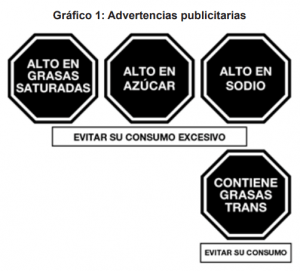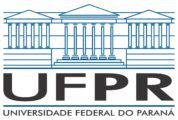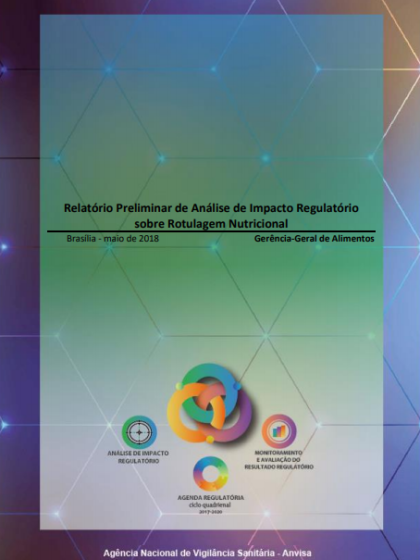Warning or traffic light: what is the most efficient food labeling in Brazil?
Brazil has formally committed to the goals for the United Nations Decade of Action on Nutrition, and one of the steps to get there is to adopt the front-of-package warning labels. Anvisa (the National Agency of Sanitary Surveillance) has already been discussing the issue since 2014. But what is the best proposal? A study tested the effectiveness of different labeling models. Find out the result.
Researches
Institution
Published
All food packages contain, in most cases in small print, the ingredients that compose that product. But is this enough to warn consumers to what they are consuming? To fight problems such as cardiovascular diseases and obesity, caused, among other reasons, by bad food choices, Brazil has debated the implementation of front-of-package labeling, which is to include the nutritional information of the food on the front of the package of the product. There are two main models under discussion, the warning and the traffic light ones. Brazilian researchers analyzed both proposals to learn, mainly, which one was the most efficient and if this change would influence the consumers in the moment of the purchase of the food. Research has shown that front-of-package warning labels increase the chances for the population to eat healthy foods [or] to have a healthy diet and understand the nutritional content of foods.
Methodology
The research participants were selected based on their social, economic, geographic and educational characteristics to represent the Brazilian population. Out of a total of 3,353 people, 1,607 replied to the full survey. The study was conducted online and aimed at stimulating supermarket shopping. Initially, consumers had to analyze food images without front-of-package labels. In the second part of the research, they randomly analyzed one of the two models studied in the packages.
-
1.607
participants -
804
answered questions regarding the traffic-light model -
803
answered questions regarding the warning model
Conclusions:
The research showed that labels with warnings led to a 16.1% increase in the intention to buy the relatively healthier option, compared to the first stage of the research, when participants answered about their willingness to buy products without a front-of-package label. The same intention amongst those who had contact with the traffic-light model increased only 9.8%. In addition, the presence of front-of-package warning labels has improved the ability of participants to identify which products contain certain excessive nutrients. Respondents who answered questions about the warning model correctly identified 24.6% more products compared to the control (products that did not have any of the front-of-package label models), while those who saw the traffic-light model improved their ability to identify products by only 3.3%.
-
24,6%
of foods with triangles were correctly identified -
3,3%
of products with traffic-lights were classified without errors
Scientific article
Support material
Inspirational laws and projects
Successful cases
-

Front-of-package labeling in Chile (in Spanish)
From a decree signed by the president of the country in 2018, foods with excessive amounts of sodium, sugar, fats and saturated fats should have a warning octagon colored in black and white. Uruguay is the first country in Mercosul and third in the Americas to implement the front-of-package warning label, which is also being applied to regulate food in schools and government purchases.
-

Front-of-package labeling in Uruguay (in Spanish)
A partir de um decreto assinado pelo presidente do país, alimentos com quantidades excessivas de sódio, açúcar, gorduras e gorduras saturadas devem apresentar um octógono de advertência nas cores branca e preta. O Uruguai é o primeiro país do Mercosul e terceiro das Américas a implementar o rótulo frontal de advertências, que também está sendo aplicado para regular os alimentos em escolas e compras governamentais.
-

Front-of-package nutrition labeling in Peru (in Spanish)
Peru's Advertising Warning Manual was approved in June 2018 and predicts the front-of-package nutrition labeling of products that have excessive amounts of sodium, sugar and saturated fat. The government opted for a model that is similar to the one from Chile, with the placement of black octagons in the upper right of the packaging.
-

Front-of-package Nutrition Labeling Project in Canada
The country is considering inserting the warning labels in ultra-processed and processed foods with excess of salt, sugar and saturated fat. The models under analysis present the excessive nutrients within a rectangle.
o.
Talk to us
Do you have any questions, suggestions, comments or want to help increase the debate about adequate and healthy eatings? Send an e-mail to contato@alimentandopoliticas.org.br or fill out the form on the Contact us page.
Subscribe to our email lists for all the latest news first hand
Find other themes
-
Conflict of interests
Find out how public policy can be influenced by private interests and how to avoid it -
Food advertising
Learn how advertising can negatively influence food choices, especially for children -
Food environment
Understand how physical, social, economic, cultural and political environments can influence Brazilian eating [or dietary] habits -
Food Systems
Healthy patterns of food production, distribution and consumption combat obesity, hunger and climate change. -
Price of food
Understand how fiscal measures directly affect the consumption of healthy and unhealthy foods -
Real healthy eating
Find out how to improve the population's dietary habits in your city, state or country







